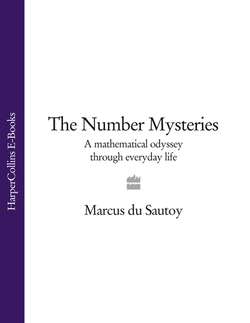Читать книгу The Number Mysteries: A Mathematical Odyssey through Everyday Life - Marcus Sautoy du - Страница 30
How to make the world’s roundest football
ОглавлениеMany sports are played with spherical balls: tennis, cricket, snooker, football. Although nature is very good at making spheres, humans find it particularly tricky. This is because most of the time we make the balls by cutting shapes from flat sheets of material which then have to be either moulded or sewn together. In some sports a virtue is made of the fact that it’s hard to make spheres. A cricket ball consists of four moulded pieces of leather sewn together, and so isn’t truly spherical. The seam can be exploited by a bowler to create unpredictable behaviour as the ball bounces off the pitch.
In contrast, table-tennis players require balls that are perfectly spherical. The balls are made by fusing together two celluloid hemispheres, but the method is not very successful since over 95% are discarded. Ping-pong ball manufacturers have great fun sorting the spheres from the misshapen balls. A gun fires balls through the air, and any that aren’t spheres will swing to the left or to the right. Only those that are truly spherical fly dead straight and get collected on the other side of the firing range.
How, then, can we make the perfect sphere? In the build-up to the football World Cup in 2006 in Germany there were claims by manufacturers that they had made the world’s most spherical football. Footballs are very often constructed by sewing together flat pieces of leather, and many of the footballs that have been made over the generations are assembled from shapes that have been played with since ancient times. To find out how to make the most symmetrical football, we can start by exploring ‘balls’ built from a number of copies of a single symmetrical piece of leather, arranged so that the assembled solid shape is symmetrical. To make it as symmetrical as possible, the same number of faces should meet at each point of the shape. These are the shapes that Plato explored in his Timaeus, written in 360BC.
FIGURE 2.03 Some early designs for footballs.
What are the different possibilities for Plato’s footballs? The one requiring fewest components is made by sewing together four equilateral triangles to make a triangular-based pyramid called a tetrahedron—but this doesn’t make a very good football because there are so few faces. As we shall see in Chapter 3, this shape may not have made it onto the football pitch, but it does feature in other games that were played in the ancient world.
Another configuration is the cube, which is made of six square faces. At first sight this shape looks rather too stable for a football, but actually its structure underlies many of the early footballs. The very first World Cup football used in 1930 consisted of 12 rectangular strips of leather grouped in six pairs and arranged as if assembling a cube. Although now rather shrunken and unsymmetrical, one of these balls is on display at the National Museum of Football in Preston, in the North of England. Another rather extraordinary football that was also used in the 1930s is also based on the cube and has six H-shaped pieces cleverly interconnected.
Let’s go back to equilateral triangles. Eight of them can be arranged symmetrically to make an octahedron, effectively by fusing two square-based pyramids together. Once they are fused together, you can’t tell where the join is.
The more faces there are, the rounder Plato’s footballs are likely to be. The next shape in line after the octahedron is the dodecahedron, made from 12 pentagonal faces. There is an association here with the 12 months of the year, and ancient examples of these shapes have been discovered with calendars carved on their faces. But of all Plato’s shapes, it’s the icosahedron, made out of 20 equilateral triangles, that approximates best to a spherical football.
FIGURE 2.04 The Platonic solids were associated with the building blocks of nature.
Plato believed that together these five shapes were so fundamental that they were related to the four classical elements, the building blocks of nature: the tetrahedron, the spikiest of the shapes, was the shape of fire; the stable cube was associated with earth; the octahedron was air; and the roundest of the shapes, the icosahedron, was slippery water. The fifth shape, the dodecahedron, Plato decided represented the shape of the universe.
How can we be sure that there isn’t a sixth football Plato might have missed? It was another Greek mathematician, Euclid, who in the climax to one of the greatest mathematical books ever written proved that it’s impossible to sew together any other combinations of a single symmetrical shape to make a sixth football to add to Plato’s list. Called simply The Elements, Euclid’s book is probably responsible for founding the analytical art of logical proof in mathematics. The power of mathematics is that it can provide 100% certainty about the world, and Euclid’s proof tells us that, as far as these shapes go, we have seen everything—there really are no other surprises waiting out there that we’ve missed.
Make a goal out of card and see how good the different shapes are for finger football. Try some of the tricks in this video: http://bit.ly/Fingerfooty which you can also see by using your smartphone to scan this code.
